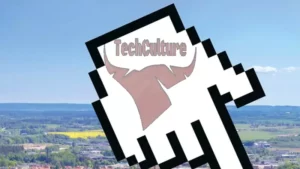If you’ve ever found yourself droning on about your business journey only to be met with yawns or glazed eyes, it’s time to kick your storytelling up a notch. A compelling story isn’t just a dry recounting of events; it’s an emotional rollercoaster that leaves your audience hanging on every word. The secret sauce? Organize the key details of your journey and turn them into engaging stories with the help of tools like ChatGPT or any large language model that tickles your fancy.
Imagine this: you’ve got a business journey brimming with moments that could resonate deeply with your audience, but you need a little help pulling them out. Enter ChatGPT. It’s like having a personal editor who turns your rambling anecdotes into finely-tuned stories. You start by providing some context—your business, what it achieves, when you started it, and where it stands now. From there, ChatGPT can generate a list of twenty questions to tease out the most compelling aspects of your journey, from the initial idea and the struggles you faced, to the triumphant successes you’ve enjoyed.
But don’t just stop at generating questions. Use the responses to highlight specific, standalone moments that can each be turned into their own story. This technique borrows a classic method from the film industry: start every story in the middle of the action. Instead of giving a chronological history, plunge your audience into a scene where something significant is happening. This grabs attention and keeps listeners interested.
For instance, let’s say one of your moments involves the nail-biting decision to pivot your business model. Your story might start in the thick of the debate, capturing the tension and urgency of the moment. Once you’ve set the scene, guide your audience through the context, the decision-making process, and ultimately, the impact of that pivotal choice. This approach not only makes your story more engaging but also more memorable.
And let’s not forget the emotional component. Emotions are the glue that makes stories stick. Whether it’s the exhilaration of landing your first big client or the gut-wrenching anxiety of a near-failure, incorporating emotional triggers can make your stories resonate more deeply. ChatGPT can even help identify these emotional triggers and suggest phrases to convey them effectively. For instance, to evoke excitement, you might use phrases like “my heart was pounding” or “I could hardly believe my eyes.”
Once you’ve identified these key moments and the emotions tied to them, practice telling your stories. Make them a regular part of your business interactions—whether in pitches, presentations, or casual conversations. Let ChatGPT jog your memory and refine your narratives, helping you become a master storyteller.
The art of storytelling in business isn’t just about sharing your journey; it’s about making your audience feel like they’re part of it. By organizing your experiences into compelling narratives, starting in the middle of the action, and focusing on emotional triggers, you can ensure your stories resonate deeply and leave a lasting impact. So, dust off those memories, enlist a little AI help, and start crafting stories that your audience will remember and cherish.






